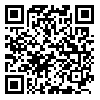Volume 5, Issue 3 (19 2012)
IJMEHM 2012, 5(3): 47-63 |
Back to browse issues page
Download citation:
BibTeX | RIS | EndNote | Medlars | ProCite | Reference Manager | RefWorks
Send citation to:



BibTeX | RIS | EndNote | Medlars | ProCite | Reference Manager | RefWorks
Send citation to:
Rasekh M, Khorshidi M, Amiri F. Posthumous reproduction: review of ethical and legal aspects. IJMEHM 2012; 5 (3) :47-63
URL: http://ijme.tums.ac.ir/article-1-117-en.html
URL: http://ijme.tums.ac.ir/article-1-117-en.html
1- Law and Bioethics Department, Aviccena Research Institute, Shahid Beheshti University, Tehran, Iran
2- Aviccena Research Institute, Shahid Beheshti University, Tehran, Iran.
2- Aviccena Research Institute, Shahid Beheshti University, Tehran, Iran.
Abstract: (11102 Views)
Posthumous reproduction has recently emerged in line with the development of assisted reproduction technology (ART) methods. In this method, individuals take steps to freeze their gametes or embryos for posthumous insemination or reproduction. However, diverse moral and legal questions ensue, and it is important to preserve human dignity and protect the child's rights and interests. In this regard, from an ethical point of view, we discuss supporting and opposing arguments on autonomy, consent, and the child’s interests. We reason that any measure to be taken on the gamete after death has to be based on the autonomy of the deceased and his/her explicit or implicit consent as to the posthumous use of the gamete. On the legal aspects, we discuss proprietary rights over gametes, filiation of the child, and his/her inheritance. In our opinion, non-financial authority over one’s organs, tissues and cells, as well as parenthood and conditional inheritance are plausible answers in these regards. Evidently, the legal system cannot address these issues without taking into account the ART developments and contemporary expediencies. This in turn depends on taking a modern stance relying on justifiable moral and legal principles. Moreover, it will help identify shortcomings of the legal system in this regard.
Keywords: posthumous reproduction, gamete and embryo cryopreservation, filiation, interests of the child, inheritance
Type of Study: Research |
Accepted: 2013/07/9 | Published: 2017/09/27
Accepted: 2013/07/9 | Published: 2017/09/27
Send email to the article author
| Rights and permissions | |
 |
This work is licensed under a Creative Commons Attribution-NonCommercial 4.0 International License. |





